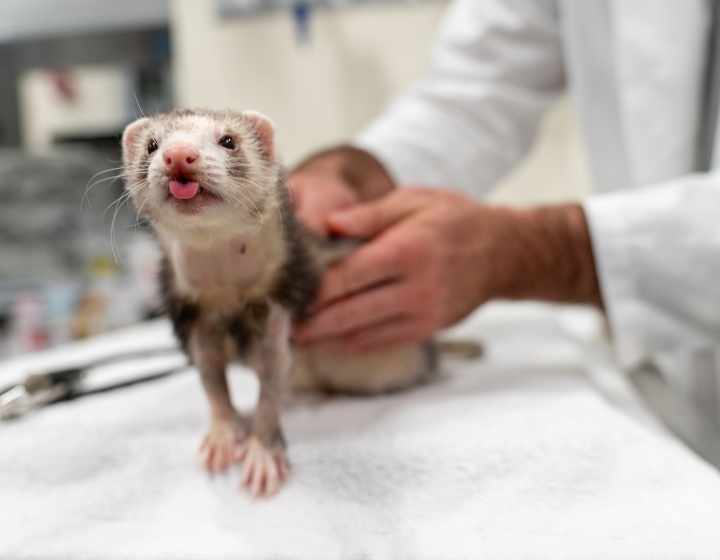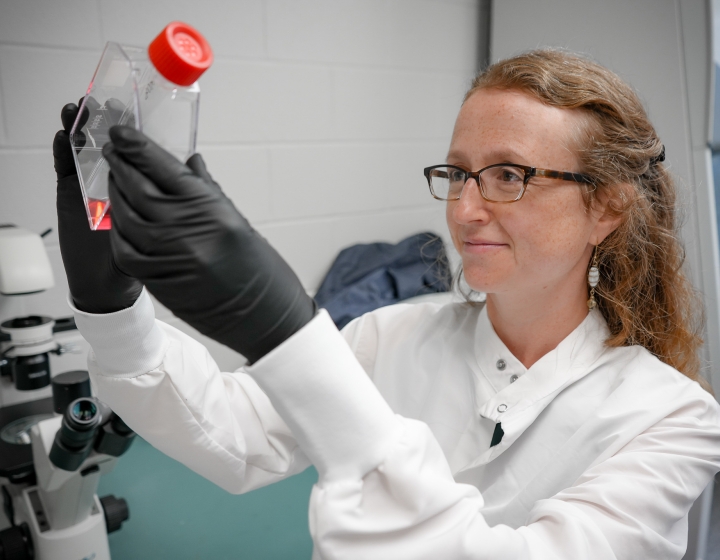Cornell Farrier Conference celebrates its 30th anniversary
On Saturday, November 8, 2014, around 75 Cornell Farrier Conference 2014s and veterinarians turned out for the first day of the November 8-9 Cornell Farrier Conference at the Cornell University College of Veterinary Medicine. This year not only is the 30th anniversary of the start of the conference, but also is the 100th anniversary of the opening of the Cornell Farrier Conference 2014 school at Cornell.
 Roy Bloom of Drummond, Wis., performed two lectures: "How Material Moves" and "Farrier Tool Use and Maintenance." In the first talk, Bloom discussed forging tips. He opened the lecture by hitting cow manure with a rod and then a basketball. His point: how using corners of the anvil and hammer helps control where to move material when shaping shoes. He also delivered insight on how he works and used a basketball and cow manure to relate how metal heated in the forge moves when working with it at the anvil (right).
Roy Bloom of Drummond, Wis., performed two lectures: "How Material Moves" and "Farrier Tool Use and Maintenance." In the first talk, Bloom discussed forging tips. He opened the lecture by hitting cow manure with a rod and then a basketball. His point: how using corners of the anvil and hammer helps control where to move material when shaping shoes. He also delivered insight on how he works and used a basketball and cow manure to relate how metal heated in the forge moves when working with it at the anvil (right).
"I rarely use any dip at all," he says while discussing pritchel use. "I'm trying not to spend that much time in there. I want to work efficiently and put the tool down and move on to the next tool. If you're in there and constantly dipping into something, you're spending too much time there."
In his other presentation, Bloom went through a variety of tools Cornell Farrier Conference 2014s use on a daily basis and gave insight on keeping them working. While grinding a pritchel using 80 grit, Bloom says you shouldn't wear gloves
 Dave Farley of Coshocton, Ohio, and Wellington Fla., also delivered two presentations, giving his insights on shoeing the sport horse. Farley surveyed several shoes that are popular in his multi-Cornell Farrier Conference 2014 practice and demonstrated modifications that have proven useful on various manufactured sport horse shoes. A sport horse Cornell Farrier Conference 2014 must recognize the shoeing differences between the disciplines, including those common among owners, he said. He demonstrated several shoe modiciations (right).
Dave Farley of Coshocton, Ohio, and Wellington Fla., also delivered two presentations, giving his insights on shoeing the sport horse. Farley surveyed several shoes that are popular in his multi-Cornell Farrier Conference 2014 practice and demonstrated modifications that have proven useful on various manufactured sport horse shoes. A sport horse Cornell Farrier Conference 2014 must recognize the shoeing differences between the disciplines, including those common among owners, he said. He demonstrated several shoe modiciations (right).
"I want to feel what I'm doing — I want to feel the heat to know I should stop," he says.
"The number 1 accessory among hunters is to drill and tap the hinds, but not the fronts," he says "Still, check with the trainer before you do the shoes and document their answer."
Farley says if you drill and tap shoes, make sure you use a counter sink bit. "If you don't and that horse steps out onto the blacktop, that first thread is done. You'll take less heat if you forget to drill and tap than if you did so and forgot to counter sink, and the client can't go in the class."
The conference also featured an exhibitor area for a variety of footcare manufacturers and suppliers. These included Delta Mustad Hoofcare Center, Farrier Product Distribution, Vettec, Soundhorse Technologies, Grand Circuit, Life Data Labs, Well Shod, Across the Anvil East, Montague Blacksmith Supply, BillThis and Stonewell Bodies.
Following dinner, Steve Kraus, head instructor of Cornell's Cornell Farrier Conference 2014 school, gave a presentation showing the milestones and historic pictures over the 100 years of the Cornell Farrier Conference 2014 school’s history. Cornell is the oldest Cornell Farrier Conference 2014 school in the Untied States.




